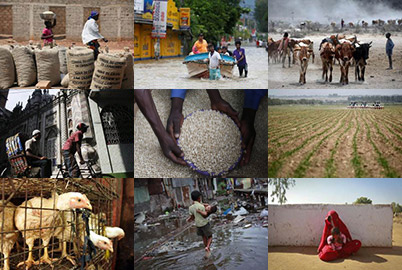* Any views expressed in this opinion piece are those of the author and not of Thomson Reuters Foundation.
One in four of the world's hungry is Indian
By Nita Bhalla
NEW DELHI (AlertNet) - For many of us living in urban India, it can be hard to beileve that people starve in this country.
In the capital, ragged street children may knock on your car window begging for one rupee to buy a chapatti and thousands of poor rural migrants may bathe, cook and sleep on the streets – but the general belief is they all manage to get enough to eat.
New Delhi, and most of its 16 million people, has prospered as a result of India's stellar economic growth over the last two decades.
The city has built a much lauded underground train network, swanky office blocks and gleaming shopping malls filled with designer stores have sprung up and luxury cars are now ten-a-penny on the congested roads.
Yet the view of country's prosperity through the eyes of many of us in Delhi may be deeply skewed.
Organisations like Oxfam India say that, despite doubling the size of its economy between 1990 and 2005, Asia's third largest economy has not yet been able to wipe out the mass hunger which haunts rural landscapes and lurks in the alley ways of urban slums.
Over the years, the government has spent billions of dollars on welfare schemes, but these are often seen as corruption-ridden and badly-run programmes with little getting through to the poor.
As a result, one in four of the world's hungry is Indian.
"Because of the country's large population, India is home to 42 percent of the world's underweight children and 31 percent of its stunted children," says Nisha Agrawal, head of Oxfam India.
"On the ... Global Hunger Index, while China has a rank of 9 with only moderate levels of hunger, India has a rank of 67 with 'alarming' levels of hunger."
There are occasional stories in the local media about villagers forced to eat wild berries or weeds due to poor harvests and a lack of food, but most of us think these are in tiny pockets of this massive nation of 1.2 billion people.
I recently read a story dating back to 2005 about a village called Jalhe Bhongiya, in the eastern state of Bihar, where 14 people died after hunger drove them to dig up a dead goat and eat it.
Six years on, the figures say it all. The situation has not changed much.
Our Standards: The Thomson Reuters Trust Principles.

